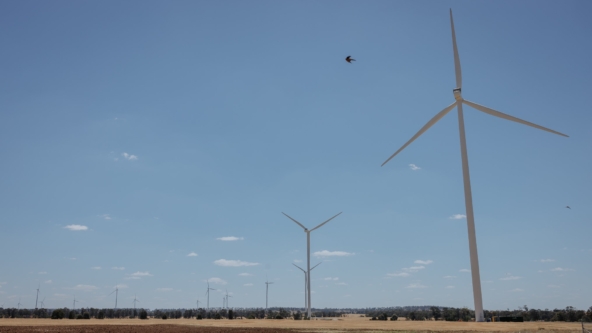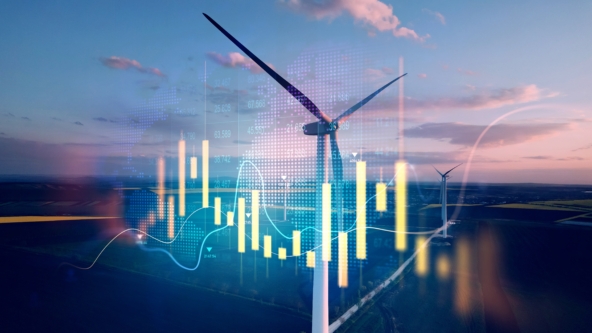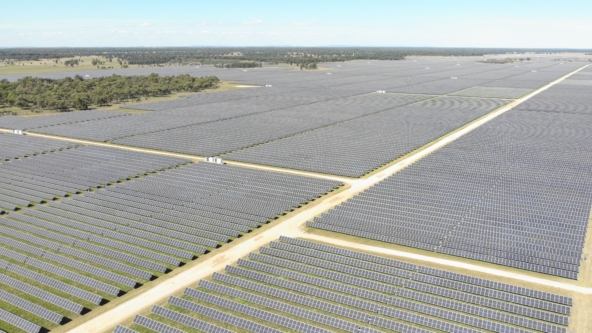Federal Government announces expansion of Capacity Investment Scheme

In a huge boost for renewable investment in Australia, the Federal Government has announced a significant expansion of its signature Capacity Investment Scheme. Through a regular series of auctions, the expanded scheme will support 23GW of large-scale wind and solar and 9GW of dispatchable capacity, and is now the government’s key policy mechanism to achieving Australia’s 82% renewable electricity by 2030 target. While full details are yet to be released, the support mechanism will guarantee a revenue floor to decrease financing risks; conversely, a revenue cap will ensure the government and consequently consumers can share in any super profits. The first auction round will be in April next year, with following rounds held every 6 months. The announcement comes just over a week before the 2023 United Nations Climate Change Conference, and will significantly bolster Australia’s decarbonisation credentials.
Rystad Energy research finds the NEM to be the most volatile electricity market in the world
In a recent report, Rystad Energy found Australia’s National Electricity Market (NEM) to be the most volatile electricity market in the world. The Queensland and South Australian markets in particular had the highest 1 hour intraday spreads (the difference between the highest and lowest 1 hour of prices) of 39 electricity markets analysed. The report highlights the strong investment case for storage throughout the NEM, where arbitrage opportunity provides the majority of forecast merchant battery revenues. The report noted that volatility in the NEM is driven by two key factors – spread in prices caused by renewables setting a low price at times of high supply and expensive gas being required during peak times, and the ongoing risk of unplanned generation and transmission outages, both of which are exposed to risks associated with extreme weather. Whilst increased investment in generation and transmission may dampen this volatility in the long term, it is widely thought that change in generation dynamics will mean volatility will remain well above what has been seen historically in the NEM, and continue to provide an attractive investment case for storage.

AEMO releases its summer preparedness report as the El Nino summer moves closer

AEMO recently released its summer preparedness report, highlighting the potential risks and their mitigants over the potentially high demand and extreme weather November to March period. This summer is seen as particularly important in testing the resilience of the NEM under transition, with the hot El Nino summer driving increased risk of extreme weather in the November to March period. This summer is seen as particularly important in testing the resilience of the NEM under transition, with the hot El Nino summer driving increased risk of extreme weather and bushfires, and the resultant demand. Positively, the report notes that there has been a 1500MW increase in dispatchable generation, largely driven by new battery capacity, and 2000MW of new wind and solar projects compared to last summer. A growing concern with the ageing coal fleet, the report also notes a number of coal units will be out of action, highlighting the need for renewable generation and storage to replace them as soon as possible. Whilst the report flags the possibility of extreme weather driving potential load shedding events, AEMO sets out that its preparatory work, including procurement of short notice reserve and emergency capacity, will be sufficient to manage the heightened risk.
AEMO releases its Q3 2023 Quarterly Energy Dynamics, as records continue to fall into Q4
AEMO’s Q3 Quarterly Energy Dynamics, which provides energy market participants with information on the quarter’s market dynamics, trends and outcomes, highlights the positive outcomes the roll out of renewable generation continues to have across the NEM. Wholesale prices reduced significantly year on year, driven by increased in renewable output, lower demand, and offers by coal and gas in lower price bands compared to previous quarters as commodities prices slightly cool. Through the quarter, warmer weather and increased rooftop PV reduced operational demand to its lowest ever levels for Q3 – these lows have continued to be met into Q4, with each of the mainland states registration record low demand over the past month. Gas and black coal fired generation decreased in line with the increases in renewable generation, reducing emissions intensity, in a very positive trend that can only pick up into the future.

Octopus Australia’s Dulacca Wind Farm and Development Update

Did you know?
In 2021, the amount of public investment in renewables was USD$18bn worldwide


